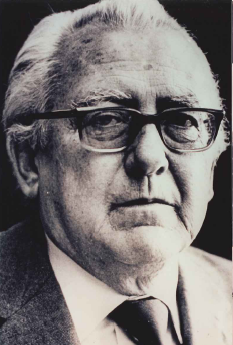
December 17, 1986
Case: Guillermo Cano Isaza

|
Case File:
Murder date:
Dec. 17, 1986
Where and how murdered:
Two hired killers waited as Cano did a U-turn on El Espectador Avenue in Bogotá shortly after 7 p.m. One rushed toward the family station wagon Cano was driving and fired a submachine gun eight times at his chest. Weaving through pre–Christmas traffic, the hitmen made off on a motorcycle, whose license plate number was identified as FAX:84.
Possible motives:
Medellín drug cartel overlord Pablo Escobar regarded E l Espectador and Guillermo Cano as major enemies, because of the paper’s unceasing campaign against the illicit drug trade and its support for extradition of the drug traffickers to the United States.
Suspects:
In October 1995, nine years after the murder, María Ofelia Saldarriaga, Pablo Enrique Zamora, Carlos Martínez Hernández and Luis Carlos Molina Yepes were found guilty of conspiracy to commit murder and were sentenced to 16 years and eight months’ imprisonment. However, in another ve rdict on July 30, 1996, the Supreme Tribunal of Bogotá rescinded that decision, absolving them of the criminal charges. The lone exception was Molina Yepes, who remained the only one condemned; he was recaptured on February 18, 1997. Earlier, Medellín Cartel drug chieftains Pablo Escobar Gaviria, Evaristo Porrás and Gonzalo Rodríguez Gacha, as well as Molina Yepes, were named the masterminds of the murder.
Violent consequences:
Several judges and court officials were bribed. A magistrate, the father of a judge and the Cano family lawyer were murdered. Another magistrate, four journalists and two of Cano’s children had to flee Colombia after repeatedly receiving death threats. Distribution of El Espectador in Medellín was regularly sabotaged. The general manager and the circulation manager there were murdered.A bomb blast virtually destroyed the newspaper’s main office. The Cano family summer home near Cartagena was set ablaze. Also murdered was the man suspected of having shot Cano and other members of a gang calling itself Los Priscos, hired by the Medellín Cartel to kill Cano.
Irregularities in the legal proceedings:
Judges fired for accepting bribes and deliberate negligence during the preliminary investigation were never questioned. Magistrates, court officials and jurors were threatened. The case took years to go through the courts. New leads were not followed up. Luis Carlos Molina Yepes, one of those found responsible for the murder, escaped when he was allowed to leave prison to buy cigarettes. The Medellín Cartel infiltrated the judiciary, buying judges and obtaining information vital to its defense .
Personal File:
Birthplace:
Bogotá
Age at time of death:
61
Marital status:
Married in 1953 to Ana María Busquets
Children: (names and ages at time of father’s death)
Juan Guillermo, 32; Fernando, 30; Ana María, 26; María José, 23, and Camilo, 20.
Education:
Graduate of Gimnasio Moderno High School, Bogotá.
Profession / occupation:
Journalist. Editor and publisher of the daily El Espectador.
Journalism background:
Began work in 1942 at the age of 17, writing about bullfighting for El Espectador. He also was a general assignment reporter for the newspaper’s "Day to Day" section. In 1950, he launched the paper’s Sunday magazine, "Magazin Dominical." He was El Espectador’s roving correspondent in Europe for several years. He became the editor in 1952.
Years as a journalist:
44
Awards and distinctions:
National Journalism Prize for 1986. He was awarded posthumously the "Rodrigo Lara Bonilla" Medal in 1987 as well as the María Moors Cabot Prize and the United Nations International Press Service award. In 1988, he received the Postobon award and the International Red Cross Medal. Named for him have been a dam in the department of Antioquia, two high schools — one in Bogotá and one in Medellín — and a sports complex.
Civic activities:
He was a member of the Bogotá Jockey Club and the Club de los Lagartos.
Hobbies:
A great passion for literature. When he died, his library contained around 5,000 books, especially on historical topics such as the Spanish Civil War and the Second World War, as well as novels and art books. He was a fan of soccer, bullfighting and equestrian sports, and he played tennis. Many of his works received prizes and were published in a book.
|